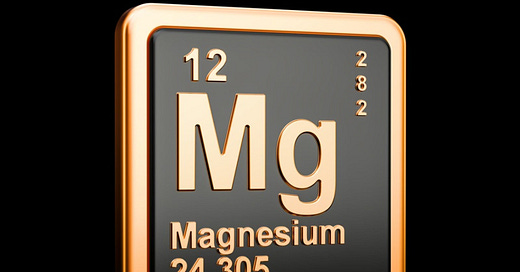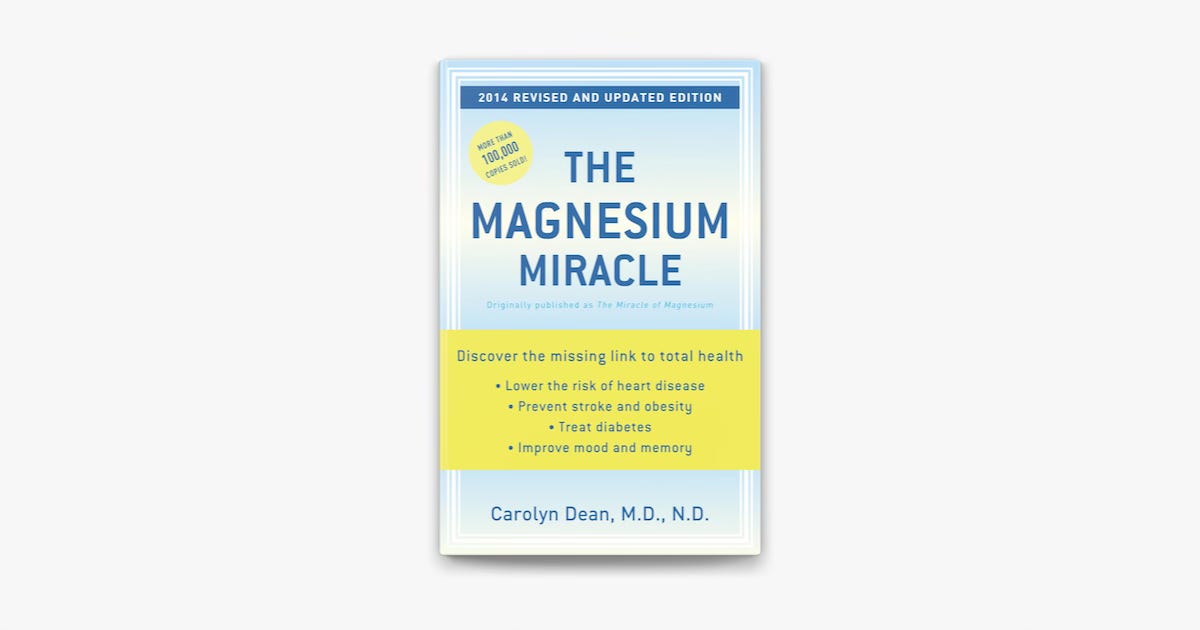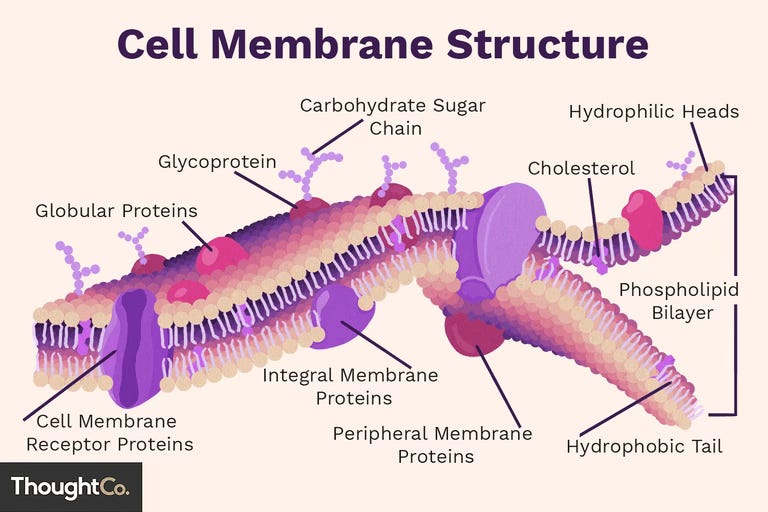Magnesium was first isolated as an element by Sir Humphry Davy in 1808.The element was named after the district of Magnesia in Thessaly, Greece, where large deposits of magnesium carbonate were found. In conventional medicine, Magnesium is used mostly in acute settings:
1. Obstetric: IV magnesium is used in eclampsia management. One of the earliest uses of magnesium in a critical care setting was for treating eclampsia and pre-eclampsia, conditions associated with pregnancy that can lead to seizures. Magnesium sulfate has been used since the early 20th century to prevent and control seizures in these conditions.
2. Cardiovascular Health: When I was a first-year intern at Hopkins, on my first day on call, my senior resident Dr. Anthony Pick, a brilliant, tough-as-nail drill sergeant, pulled me aside and said, “Phan, you are not in Kansas anymore.” On average, the ICU team is responsible for all code blue situations when one is on call. In the 1990s, before it took Bill Gates’ money and did Event 201, Hopkins was very different. Unbelievable, but medicine was practiced and taught at the highest level at one time in America. Dr. Pick, who graduated from Oxford medical school and speaks English with that perfect British accent, always reminds me of how I was “lucky” to get accepted to Hopkins, often reminding me that I am the little grasshopper. I am walking among the “giants” in medicine. I worked extremely hard as an undergraduate, upper division graduate, and medical school student to be at the best for only one goal: to be trained at Johns Hopkins. But I knew I was out of my league in my first week at Hopkins. Of course, my senior knew. He knew that I did not belong on the first day! He went on to say to forget everything that was taught to me in Kansas. “You are in Baltimore now.” He asked me a point-blank question. “What will you do when there is a code blue, and you are the first physician to arrive in the room ?” I gave him some mumble-jumble anti-arrhythmic medications answer, and he immediately told me to shut it. With my limited understanding of anti-arrhythmic medications at that time, he proceeded to say, “Phan, you will kill the patient.” He went on to teach me the usage of IV Magnesium in an acute life-or-death situation. I was so fearful that I was hanging out on the stairways on the fifth floor, hoping not to be the first intern to arrive at all. God works in mysterious ways: at the same time, when I was trying to hide in the stairways and not be the first to get into a code blue situation, sure enough, at 5 P.M. when our shift was on, there was a code blue in room 502. As the first intern arrived, with the chaos in the room and nurses putting in new lines and shocking the patient, the head nurse turned to me and said, “What do you want to do, Dr. Phan? “ I ended up using IV Magnesium. Whenever I saw squiggly lines on the EKG monitor, I would push more Magnesium until Dr. Pick arrived.
• Arrhythmias: Magnesium began to manage certain cardiac arrhythmias in the mid-20th century. Its role in stabilizing heart rhythms, especially in torsades de pointes (a specific type of ventricular tachycardia), has been recognized since then.
3. Respiratory and Neuromuscular Uses: In young adults or kids with an acute asthma attack, back then, to prevent the usage of steroids, Hopkins’ protocol was IV magnesium.
• Asthma: By the 1980s, magnesium sulfate was used to treat severe asthma exacerbations, mainly when conventional treatments were ineffective. Its bronchodilatory and anti-inflammatory effects are beneficial in these cases.
Trained as an ICU Intensivist: Looking back, we used magnesium all the time in the ICU.
4. Magnesium in Critical Care:
• Electrolyte Balance: Magnesium is crucial for maintaining electrolyte balance, essential for proper cardiac and neuromuscular function. Hypomagnesemia (low magnesium levels) is expected in ICU patients and can lead to complications such as arrhythmias and muscle weakness.
• Replenishment and Monitoring: Magnesium levels are closely monitored in the ICU, and magnesium is often administered to replenish deficiencies and support overall metabolic and physiological stability.
• Cardiac Care: In addition to treating arrhythmias, magnesium is used to reduce mortality and stabilize cardiac function in the management of acute myocardial infarction (heart attack).
• Neurological Protection: Magnesium has neuroprotective properties and may help mitigate neurological damage in traumatic brain injury or stroke cases.
5. Multifaceted Benefits:
• Anti-inflammatory and Vasodilatory Effects: Magnesium’s anti-inflammatory and vasodilatory properties are beneficial in managing conditions like acute respiratory distress syndrome (ARDS) and sepsis.
• Support in Shock and Sepsis: It plays a supportive role in managing shock and sepsis, contributing to vasodilation and stabilization of blood pressure.
As a conventional medicine physician, I seemed to forget about Magnesium until I left conventional medicine. Dr. Carolyn Dean wrote the book on Magnesium, The Magnesium Miracle. She has an advantage over 90 percent of American-trained physicians. She was first a “natural path” before she became an M.D. Trained as an N.D., she knows much more about nutrition than the average American-trained physician. This begs the question, “Why are physicians not recommending magnesium to our patients?”
Starting at the cell, magnesium is everywhere in the membrane, supporting the lipid membrane structure. Magnesium helps stabilize the structure of cell membranes by interacting with phospholipids and maintaining the proper arrangement of lipid bilayers. This stabilization is crucial for maintaining membrane fluidity and integrity. It also acts as “portals” or “doors” that control what comes in and out of the cell.
Calcium Channels: Magnesium acts as a natural calcium antagonist, regulating the flow of calcium ions across cell membranes. It helps prevent excessive calcium influx, which can lead to cellular damage. Dr. Thomas Levy wrote a book called “Death by Calcium.” In the book, his leading theory for all diseases is the influx of calcium into the cell, causing massive damage inside the cell, especially at the mitochondria. The ratio of intracellular Calcium versus extra-cellular Calcium is 1-10,000. While needed, our cells do not like Calcium. Conversely, The ratio of intracellular Magnesium to extracellular Magnesium is 10,000-1. Magnesium controls calcium intake.
Potassium Channels: Magnesium influences potassium ion channels, playing a role in maintaining the resting membrane potential and electrical excitability of cells, particularly in nerve and muscle tissues. By controlling Potassium, magnesium is not only the gatekeeper; it also gives the gate an electrical charge.
Chemical reactions: We all have different genes that make us unique. However, the pathways or chemical reactions inside the cells are the same. The software is different, but the hardware is all the same. How we optimize these pathways is the difference between wellness versus aging and diseases. Magnesium is involved in over 300+ chemical reactions inside the cell.
The Mitochondria and The Electron Transport System: The key to the kingdom…Magnesium is essential for the stability and function of ATP (adenosine triphosphate), the primary energy currency of the cell. It forms a complex with ATP, which is necessary to function ATP-dependent processes properly.
In the previous post, we talked about the importance of being Alkaline. It takes energy from the Mitochondria to keep it alkaline. Magnesium controls the production of the “money maker” in our cells. Magnesium controls the enzyme ATP that gives the cell its energy. I wanted to write about Magnesium last weekend, but I held on wanting to see how much Magnesium I talk to my patients about. Today, I kept an internal journal about my conversations with my patients. I saw a patient who couldn’t sleep, and I rec. Magnesium. I saw patients with anxiety, hypertension, and emphysema, and the recommendation is Magnesium. One can take Magnesium orally, but most can’t tolerate the higher dosage due to G.I symptoms. To get the proper Magnesium into the cell, one can put it in an IV. An easier way is to use Magnesium transdermally as a lotion. I like the brand Ancient Minerals ( I am not financially connected to them). It is not a corporation. It is still mom-and-pop ( made in America, as if that means anything in 2024). It is best used after showering when the pores are wide open. It is fantastic to use while taking baths. It should be used daily, more than just once a day. It should be used often. It is absolutely “Do no Harm.”
“First Do no Harm”,
Anthony Phan M.D.








I always told my patients in pain clinic to take an epsom salt (pure magnesium) bath at night. The magnesium gets absorbed through the skin and doubles as a muscle relaxant and heart optimizer.
As an anesthesiologist/intensivist trained at Stanford, we would give 1 gram of Magnesium for all cases of acute arrhythmia, most commonly atrial fibrillation. It was a pure knee-jerk response. No labs, no thinking. Just give mag. Nice walk down memory lane, thank you.
Need a po dose of mag? Try dark chocolate or an avocado, nuts, legumes, or tofu:)
The consensus amongst Vitamin-D3 advocates is that the next most important nutrient is Magnesium. When taking higher super physiological doses of Vitamin-D3 of 20'000IU=500ug or more daily many recommend taking oral Magnesium to the point of gut tolerance to get the benefit of the VItamin-D3. MgO is not favored due to very poor absorption.
It would be lovely if you can do a post on your take on Vitamin-D3.
I like to point people at the long running VitaminDwiki
https://vitamindwiki.com
for easy access to much information. Then for those that want to look at my personal recommendations based on rather too much reading on a narrow topic I have them on my bio page.
https://cholecalciferol.miraheze.org/wiki/Kalle_Pihlajasaari
Those who somehow still believe that vitamins cannot help with covid in particular can look at my collection of published paper extracts at
https://cholecalciferol.miraheze.org/wiki/DOI
and the live running review/meta of all the early covid treatment remedies including Vitamin-D3
https://c19early.org/dmeta.html
Thank you for your work in promoting information.
I have found that placing a spoonful of magnesium chloride (magnesium oil ingredient) or magnesium sulfate (Epsom salts, foot soak) on my hand, wetting it and rubbing it on a cramped calf muscle for 30 seconds cleared it up immediately for me on each of 4 occasions that I have had it after a protracted day of walking and then relaxing at home. I discovered this one day when I was in agony and could not find my wife's 'magnesium oil', my wife finds that rubbing 'magnesium oil' on her legs after a lot of walking will prevent cramping in the night.
We both take magnesium supplement, I have one tablet, my wife takes 6 to 8 spread during the day to effectively mitigate most of her ME/CFS and/or fibromyalgia related aches, we both take Vitamin-D3 according to the guidelines I have researched that I linked above. Our diet is likely deficient in Magnesium and in the Nordic region we know there is little hope of getting adequate VItamin-D3.